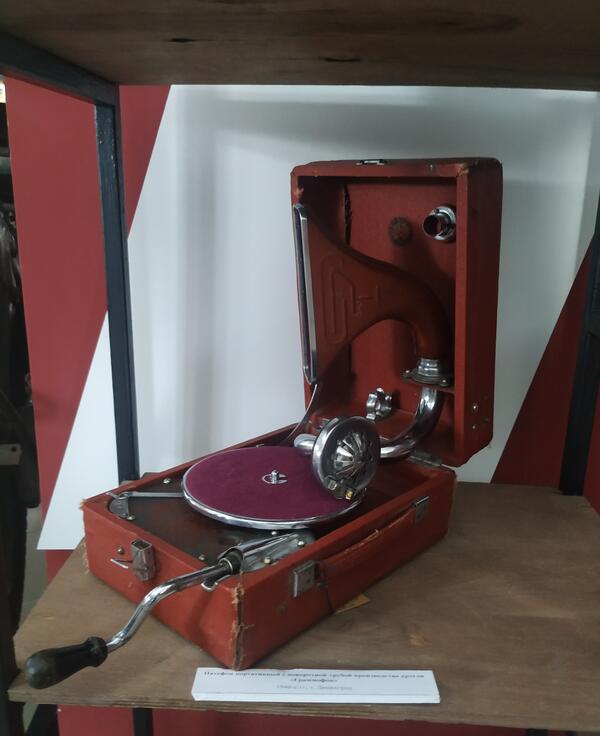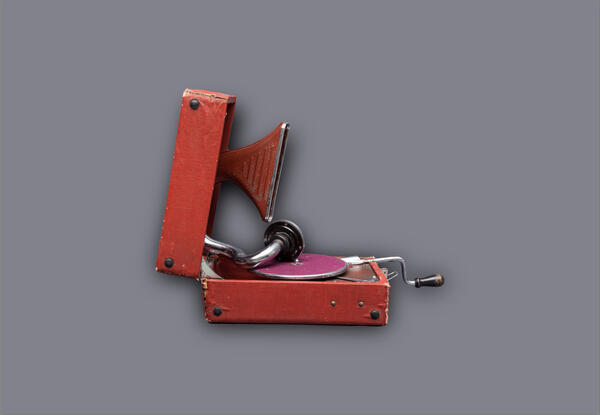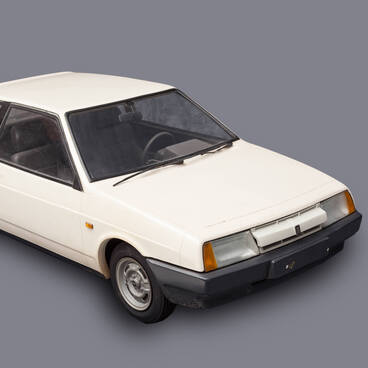The pathephone is a mechanical device for playing gramophone records, a portable version of the gramophone. Unlike the latter, the pathephone had a small horn built into the case. The device itself was made in the form of a suitcase and was carried by a special handle when folded.
The pathephone became popular in pre-revolutionary Russia, and later in the Soviet Union. It was widely used in the first half of the 20th century. In 1929, the Accordion and Gramophone Factory of the RSFSR All-Union Musical Society was founded on the basis of the workshops of the Krasny Oktyabr Factory.
In 1931, it was renamed Portable Gramophone Factory No. 3, in 1933 it was subordinated to the People’s Commissariat of Heavy Industry of the USSR and was renamed Leningrad Gramophone Factory No. 1 of the State Union Trust of the Gramophone and Record Industry.
There were many factories that produced such audio equipment. Portable pathephones were even made at the Vyatskiye Polyany Machine-Building Plant, which later began to manufacture the Vyatka scooters, as well as trailers for Izhevsk motorcycles. The exhibit on display was produced by the Leningrad Pathephone Factory.
This pathephone has good acoustics, is solid and handy. In addition to being compact, it is also distinguished by its volume. The sound is loud enough, but cannot be adjusted. Like a suitcase for traveling, this portable pathephone is key-locked and, like all similar devices, it requires no power supply to operate.
A portable pathephone could be taken on a car, or motorcycle ride. In the 1930s, cases were known, where workers of industrial enterprises or collective farms received a personal award in the form of a motorcycle and a pathephone at the same time.
Despite the fact that the popularity of pathephones began to decline in the middle of the 20th century, in line with cyclicity of tastes they have made a surprising comeback. Currently, they are still being produced, though today’s portable devices can not only play records but also play music from USB media.
The pathephone became popular in pre-revolutionary Russia, and later in the Soviet Union. It was widely used in the first half of the 20th century. In 1929, the Accordion and Gramophone Factory of the RSFSR All-Union Musical Society was founded on the basis of the workshops of the Krasny Oktyabr Factory.
In 1931, it was renamed Portable Gramophone Factory No. 3, in 1933 it was subordinated to the People’s Commissariat of Heavy Industry of the USSR and was renamed Leningrad Gramophone Factory No. 1 of the State Union Trust of the Gramophone and Record Industry.
There were many factories that produced such audio equipment. Portable pathephones were even made at the Vyatskiye Polyany Machine-Building Plant, which later began to manufacture the Vyatka scooters, as well as trailers for Izhevsk motorcycles. The exhibit on display was produced by the Leningrad Pathephone Factory.
This pathephone has good acoustics, is solid and handy. In addition to being compact, it is also distinguished by its volume. The sound is loud enough, but cannot be adjusted. Like a suitcase for traveling, this portable pathephone is key-locked and, like all similar devices, it requires no power supply to operate.
A portable pathephone could be taken on a car, or motorcycle ride. In the 1930s, cases were known, where workers of industrial enterprises or collective farms received a personal award in the form of a motorcycle and a pathephone at the same time.
Despite the fact that the popularity of pathephones began to decline in the middle of the 20th century, in line with cyclicity of tastes they have made a surprising comeback. Currently, they are still being produced, though today’s portable devices can not only play records but also play music from USB media.






